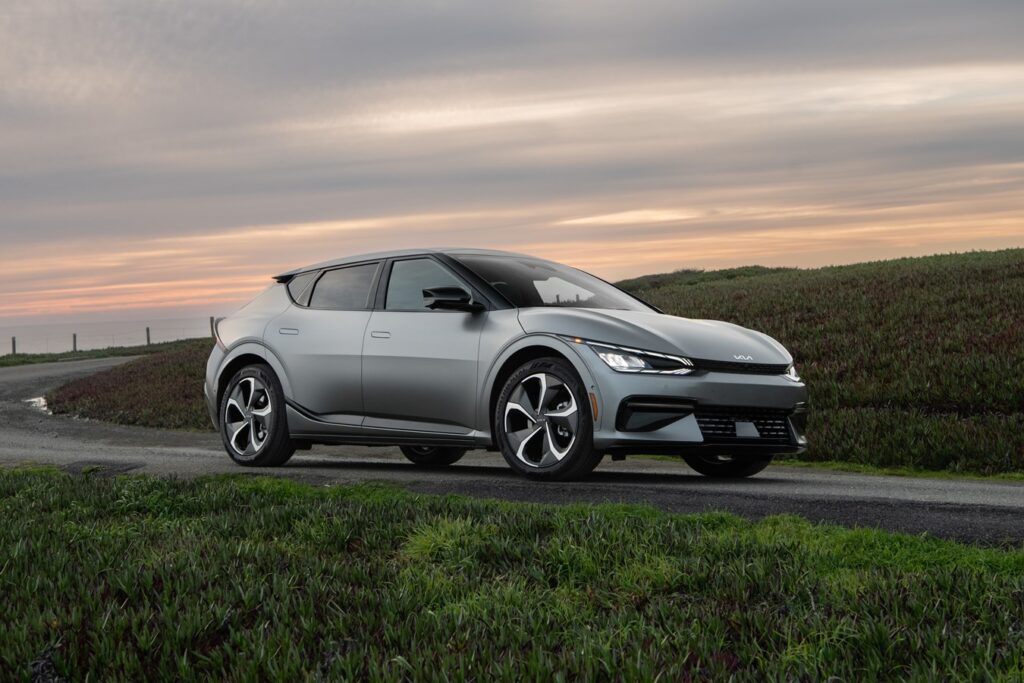Charging rate or speed (kW)
When fuelling a combustion vehicle, you pump and go without much thought. With electric vehicle charging, there’s another important factor: different vehicles can handle different rates of charge. This will affect how quickly a vehicle can recharge. For instance, the maximum rate the Kia EV6 can handle from a charging station is 350 kW (although stations that fast are currently hard to find). The Volkswagen ID.4 has a maximum charge rate of 125 kW.
Every electric vehicle has an onboard charger, or rectifier, that controls the rate at which electricity can flow to the battery during AC charging.
We’ll get into this in much more detail in Lesson 4: How you fuel an electric vehicle. For now, it will help to know that charge rates explain how quickly an EV can have charge recovered to its battery.
You’ll often see fast charge times measured from 10 to 80 per cent of capacity.

| Charging connection | Time to charge |
| Level 2 (240V / 48A) | 7 hours, 10 minutes |
| DC Fast Charge (50 kW) | 73 minutes (from 10 to 80 per cent) |
| DC Fast Charge (350 kW) | 18 minutes (from 10 to 80 per cent) |
Maximum charge rates can be unpredictable, and conditions like extreme temperatures have an impact. Because of this, our fleet electrification experts don’t suggest that fleets rely on fast-charging public stations for charging. The most reliable solution: set up enough overnight charging to meet your needs.
Electric vehicle charging connectors
If you’ve ever fuelled a diesel vehicle, you know the fuel nozzles are sized differently from those for gasoline. This prevents drivers from putting the wrong fuel in their vehicles by accident.
EVs can also come with different charging connectors (though there are two widely-used standards) but the reason is different: they all do the same thing, but different standards were invented at the same time. It’s kind of like VHS versus Betamax back in the day.
In 2022, Tesla made public the design and specification files for its North American Charging Standard (NACS) charging connector, inviting other manufacturers to integrate NACS in their vehicles and join the Tesla charging network.
As a result of more manufacturers adopting the standard, NACS will get wider support across existing charging networks as operators roll out new chargers that include NACS connectors alongside those for SAE J1772, the other commonly-used plug type.
In 2023, Ford became the first major automaker to announce it would adopt the NACS system in its vehicles and many other manufacturers have followed suit, including Audi, BMW, General Motors, Honda, Hyundai, Jaguar, Kia, Lexus, Mercedes-Benz, Mini, Nissan, Polestar, Rivian, Subaru, Toyota, Volkswagen, Volvo — and the list continues to grow.
Plug types common in North America
NACS

SAE J1772

SAE Combined Charging System (CCS) Type 1

CHAdeMO

Every EV has a maximum distance, or range, that it can travel when fully charged – learn more about range in the next topic. Don’t forget to save your progress!
Reproduction of any or all of this material is strictly prohibited without permission. Please contact fleets@electricautonomy.ca for inquiries. Copyright © 2024 – Electric Autonomy Canada – ArcAscent Inc. – All Rights Reserved
Want to learn more? Sign up or log in so you can track your progress, earn a course certificate and receive exclusive invitations to our live learning sessions.